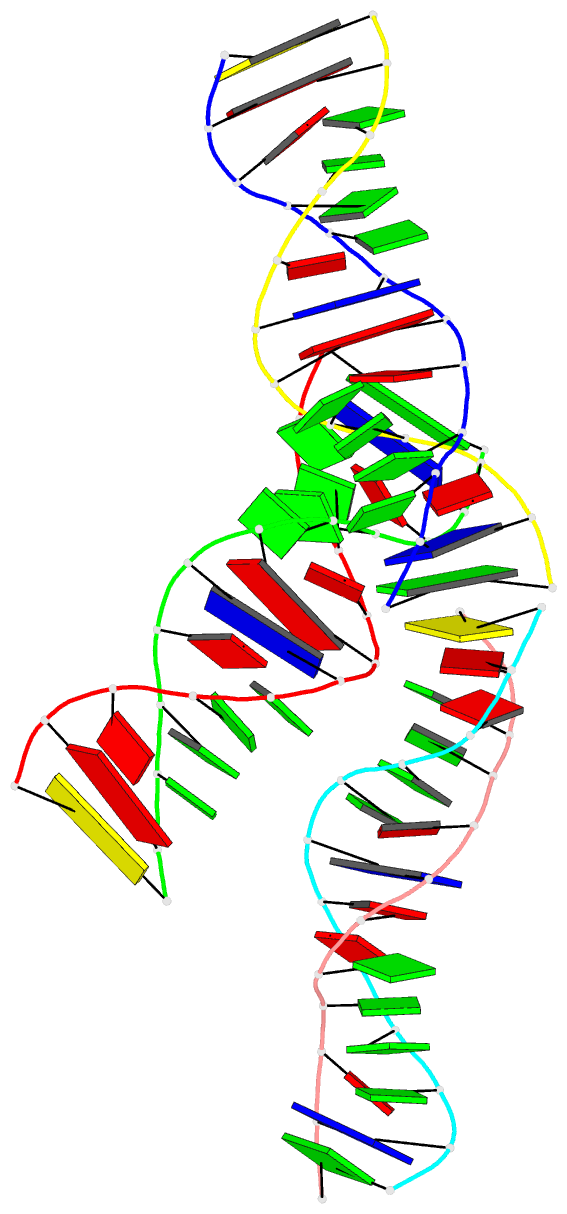Summary information and primary citation
- PDB-id
- 5gun; DSSR-derived features in text and JSON formats
- Class
- DNA
- Method
- X-ray (2.588 Å)
- Summary
- Crystal structure of d(gtggaatggaac)
- Reference
- Huang TY, Chang CK, Kao YF, Chin CH, Ni CW, Hsu HY, Hu NJ, Hsieh LC, Chou SH, Lee IR, Hou MH (2017): "Parity-dependent hairpin configurations of repetitive DNA sequence promote slippage associated with DNA expansion." Proc. Natl. Acad. Sci. U.S.A., 114, 9535-9540. doi: 10.1073/pnas.1708691114.
- Abstract
- Repetitive DNA sequences are ubiquitous in life, and changes in the number of repeats often have various physiological and pathological implications. DNA repeats are capable of interchanging between different noncanonical and canonical conformations in a dynamic fashion, causing configurational slippage that often leads to repeat expansion associated with neurological diseases. In this report, we used single-molecule spectroscopy together with biophysical analyses to demonstrate the parity-dependent hairpin structural polymorphism of TGGAA repeat DNA. We found that the DNA adopted two configurations depending on the repeat number parity (even or odd). Transitions between these two configurations were also observed for longer repeats. In addition, the ability to modulate this transition was found to be enhanced by divalent ions. Based on the atomic structure, we propose a local seeding model where the kinked GGA motifs in the stem region of TGGAA repeat DNA act as hot spots to facilitate the transition between the two configurations, which may give rise to disease-associated repeat expansion.





